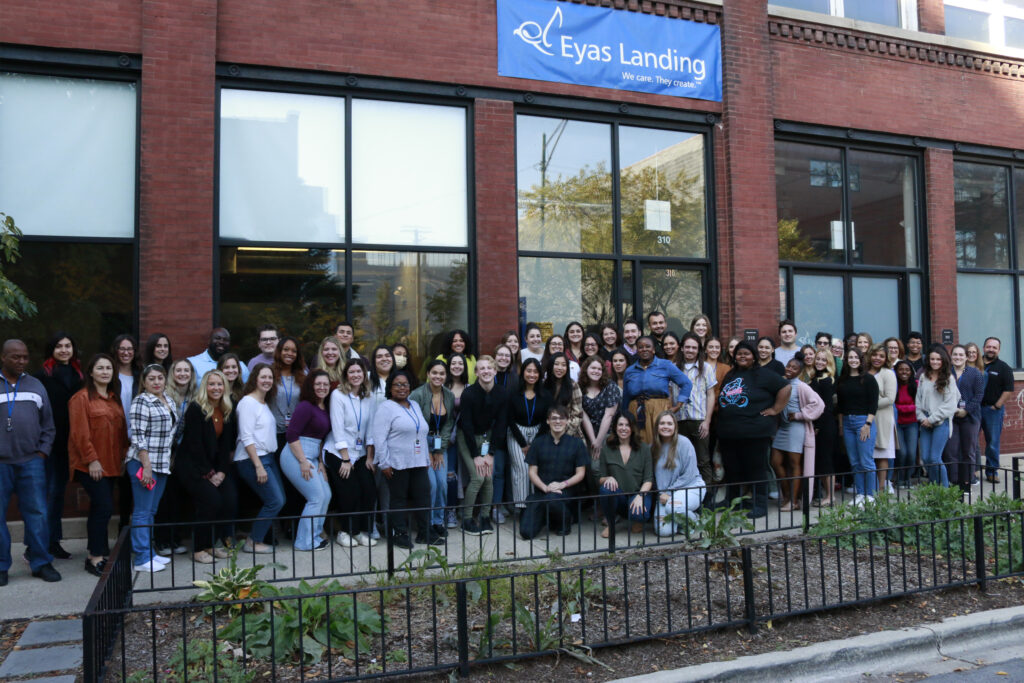Applied Behavior Analysis
Applied Behavior Analysis
Who makes up the Applied Behavior Therapy team?
“ABA” stands for Applied Behavior Analysis, which is an evidence-based treatment strategy used to decrease challenging behaviors and increase socially-appropriate behaviors. The Eyas Landing ABA team is led by a Board Certified Behavior Analyst (BCBA) with service support from experienced Registered Behavior Technicians (RBTs).
The BCBA evaluates the child to determine the focus of programming and number of ABA service hours the child would benefit from. The BCBAs are experienced in collaborating with other providers, school professionals, and focus their services on supporting caregivers and families.
The RBTs provide direct service with the child and family, including collecting data on programming and collaborating with the BCBA on modifications to programming. RBTs also work with the family, other providers, and school professionals on modifications and accommodations that best meet the child’s needs.
Both BCBAs and RBTs receive ongoing training to utilize the most current and relevant ABA techniques that are shown to be effective in teaching a wide variety of skills in learners with and without disabilities. The team is dedicated to helping their clients modify behavior and achieve functional communication across a variety of skills. Data collection is integral in each individual and group therapy session and is used to monitor progress and celebrate accomplishments. Therapists communicate data, develop cohesive treatment plans, collaborate with a multi-disciplinary team and provide caregiver training for each child to ensure the best possible results.

Together, the Behavior Therapy team seamlessly collaborates with each child’s entire therapeutic team to address best practices and individualized treatment plans. This collaboration between our highly-educated, compassionate staff maximize therapeutic outcomes and help support our clients to reach their fullest potential. At Eyas Landing, we value evidence-based practice, client-centeredness, community, diversity, collaboration, and flexibility.
Who benefits from ABA?
ABA is a common intervention used for children diagnosed with Autism Spectrum Disorder. However, after a diagnostic evaluation is completed, ABA can be used to help with any behaviors impeding with learning in school, home, or within their community. This includes physical aggression, self-injurious behavior, property destruction, inattention to tasks and temper tantrums. ABA can assist with children having difficulty communicating their wants and needs, have rigidity in routines, have difficulty interacting with peers or lack the skills to independently complete age-appropriate self-help skills. ABA also can assist in acquiring new skills and maintaining current skills.
ABA can provide support for children
across their developmental lifespan.
ABA can provide support for children
across their developmental lifespan.
Ages 3-5
Services focus on preschool readiness skills, including solitary, parallel, and cooperative play; requesting (manding) and labeling (tacting) objects and people; fine motor skills, including coloring, cutting, and pre-writing skills; conversation and social skills; self-help skills, including feeding, dressing, and grooming; toilet training; and group skills.
Ages 6-10
Services focus on activities that school-aged children participate in, including conversation, social interactions, and playing with peers; participation in group sports with peers, and other activities in the community; navigating around the community; expanding communication skills, including receptive and expressive communication; self-help skills, including feeding, dressing, grooming, bathing, toileting; vocational and household skills, including chores; academic-related skills, including spelling, math, writing, and reading; and school-based supports.
Ages 11-21
Services focus on facilitating independence in the child’s life, including expanding communication skills; navigating around the community; participating in community activities; vocational and household tasks, including cooking and cleaning; and accessing resources in the community.
Parent education and training is an important part of programming to facilitate managing challenging behaviors and generalization of skills across all settings for children at any age.
ABA Techniques
The Eyas Landing ABA team utilize a variety of approaches to ABA programs that share similar components including discrete trial teaching, reinforcement, prompting and fading strategies, outcome-based decision-making, and programming for generalization to the natural environment.
Depending on the needs of the child, therapy can be provided in adaptive group services at the clinic, in individual sessions in the home, at school or in the community. Services across multiple settings allows our clients to fully generalize skills toward independence. Therapists also provide caregiver training and support for the best possible results.
Goal of ABA
ABA therapy works to increase functional communication, both verbal and non-verbal, and expand communication skills. Additionally, it can decrease challenging behavior impeding with learning or that may be harmful to their self or others. ABA is helpful in teaching new skills to replace challenging behaviors by increasing appropriate behavior and decreasing challenging behavior. An increase in learner readiness skills, social and play skills can be achieved through ABA. The intervention can also increase independence in self-help skills, academic skills, promote generalization of skills and behaviors.
It is the goal of the ABA therapists to increase their client’s abilities to express their wants and needs to others, make friends or maintain social relationships, complete age appropriate activities of daily living (i.e. toileting, hand washing, tooth brushing, dressing, etc.) and learn and maintain new skills.
